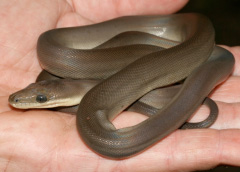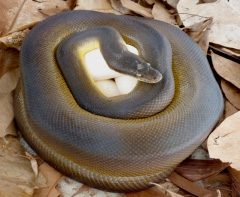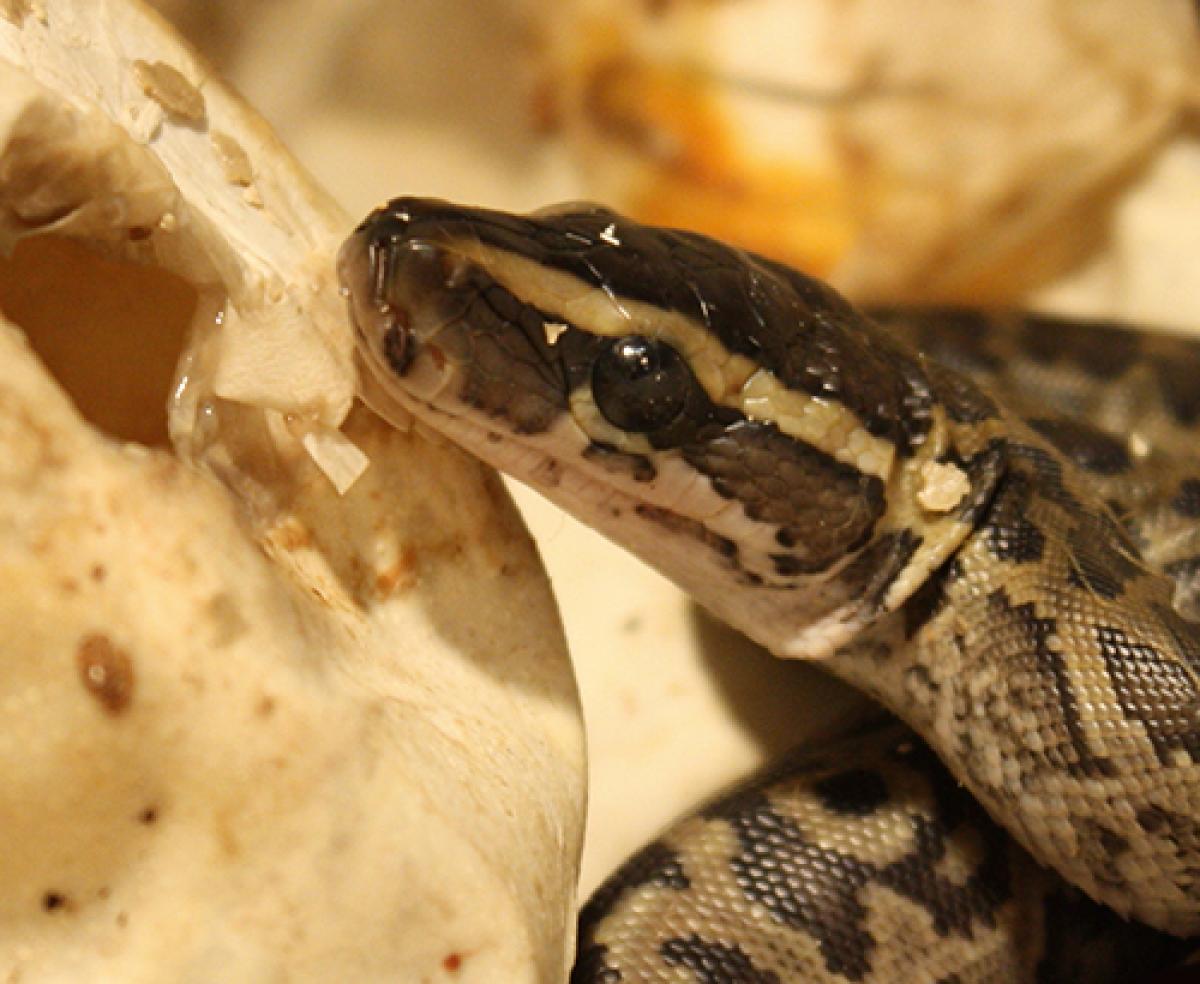
Illustrated by: Sabine Deviche
Being a parent is hard work. Your mom or dad may take you to school, cook you dinner, and take extra special care of you when you get sick, but they aren’t the only hardworking parents out there. Animal parents sometimes take care of their children too, though they probably don’t have to worry about making sure their kids get on the bus in the morning.

Like most animals who are involved in parental care, mom has to work all by herself to meet the needs of her children (also called young). This can include making sure her young are safe from predators, are warm, and that they get enough food and water. Though a snake might not seem comforting to you, python moms are actually very dedicated parents and they take good care of their kids.
Like your mom did when she was pregnant with you, female pythons hold their young inside their bodies during the babies’ development. While her young are inside of her, a python mom provides them with food and keeps them warm and hydrated. Then, python moms lay their eggs, each of which is filled with watery yolk and a tiny baby python.

When you think of eggs, you probably picture a chicken egg, with an eggshell that is hard and easy to crack. However, like many reptiles, python eggs have shells that are soft and paper-like. When a python mom lays eggs, they are a little wet. Before they dry, she will gather all of her eggs into a ball shape.
As the eggs dry, they stick together and form a clump of eggs. Then, the python mom will actually coil or wrap her body around her eggs. This behavior is called egg brooding, and a female python will often brood her eggs for about two months until her young hatch.
The next time you see a python on TV or at the pet store, don’t be scared. Instead, remember what amazing moms they can be.
Read more about: Perfect Python Parenting
Bibliographic details:
- Article: Perfect Python Parenting
- Author(s): Zachary Stahlschmidt
- Publisher: Arizona State University School of Life Sciences Ask A Biologist
- Site name: ASU - Ask A Biologist
- Date published:
- Date accessed:
- Link: https://askabiologist.asu.edu/explore/perfect-python-parenting
APA Style
Zachary Stahlschmidt. (). Perfect Python Parenting. ASU - Ask A Biologist. Retrieved from https://askabiologist.asu.edu/explore/perfect-python-parenting
Chicago Manual of Style
Zachary Stahlschmidt. "Perfect Python Parenting". ASU - Ask A Biologist. . https://askabiologist.asu.edu/explore/perfect-python-parenting
Zachary Stahlschmidt. "Perfect Python Parenting". ASU - Ask A Biologist. . ASU - Ask A Biologist, Web. https://askabiologist.asu.edu/explore/perfect-python-parenting
MLA 2017 Style

Newly hatched Northern African Rock Python.
Be Part of
Ask A Biologist
By volunteering, or simply sending us feedback on the site. Scientists, teachers, writers, illustrators, and translators are all important to the program. If you are interested in helping with the website we have a Volunteers page to get the process started.


